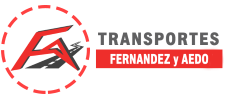The 2023 edition of the Regulations concerning the International Carriage of Dangerous Goods by Rail (RID 2023) has recently been published in the BOE. RID 2023 incorporates the amendments adopted by the Commission of Experts on the Transport of Dangerous Goods at its 57th meeting, held in Bern on 24 May 2022.
RID 2023 entered into force on 1 January and will coexist with RID 2021 until 30 June, after which only RID 2021 will remain in force.
RID 2023 is an updated version of RID 2021 with amendments adopted at the 57th session of the Committee of Experts on the Transport of Dangerous Goods, with the aim of reflecting scientific and technical developments. In addition to regulating the international transport of dangerous goods, the RID also applies to national transport in the Member States of the European Union. This regulatory harmonisation at EU level was achieved through Directive 2008/68/EC of the European Parliament and of the Council, which ensures harmonised conditions and proper functioning of the common market for the transport of dangerous goods.
The RID is the legal and essential regulation governing the international transport of dangerous goods by rail, which also applies to national transport in the countries of the European Union.
The RID is updated periodically every two years, which allows new provisions to be introduced into the regulation that incorporate the advances derived from technical and scientific progress in the transport of dangerous goods by rail, gradually improving safety.
In the RID 2023 edition, the European Union has granted financial support for the translation of this regulation into Spanish.
The RID addresses various aspects related to the transport of dangerous goods, including:
Classification of goods: Establishes the criteria for the classification of dangerous goods according to their dangerous properties, such as flammability, toxicity, corrosiveness, among others.
Packaging and labelling: Defines the requirements for the proper packaging of dangerous goods, including the selection of safe containers and packaging, as well as the correct labelling and marking of packages.
Documentation: Sets out the requirements for the documentation and labels needed for the transport of dangerous goods, such as the dangerous goods declaration, the cargo manifest and other documents necessary for the identification and tracking of goods during transport.
Transport conditions: Defines specific transport conditions, such as segregation of different types of dangerous goods, proper ventilation of containers, safety measures in case of leakage or spillage, and other requirements to ensure safety during transport.
Responsibilities and training: Sets out the responsibilities of parties involved in the transport of dangerous goods, including shippers, transport operators, drivers and other relevant actors. It also emphasises the importance of adequate training and competence of persons involved in the transport of dangerous goods.
Scope of application of the RID
The scope of application of the RID (International Regulations concerning the Carriage of Dangerous Goods by Rail) is broad and involves both international and domestic transport of dangerous goods by rail. Some key aspects of its scope of application are detailed below:
International transport: RID regulates the transport of dangerous goods by rail between different countries. It applies to all countries that have adopted the RID as a regulation for the international transport of dangerous goods by rail.
National transport in the European Union: RID also applies to the national transport of dangerous goods by rail in the member countries of the European Union. This is achieved through regulatory harmonisation and the implementation of RID provisions in the national legislation of each country.
Dangerous goods: The RID covers a wide range of dangerous goods, including chemicals, gases, flammable liquids, radioactive materials, explosives and many others. It sets out specific requirements for the packaging, labelling, documentation and conditions of carriage of these goods.
Responsibility of the parties involved: The RID sets out the responsibilities of different actors in the transport of dangerous goods by rail, such as shippers, transport operators, drivers and others involved. Each party has an obligation to comply with the regulations and ensure safety throughout the transport process.
Periodic updates: The RID is regularly updated to incorporate scientific and technical developments, as well as to address the changing needs of dangerous goods transport. These updates ensure continuous improvement of safety and adaptation to new challenges and requirements in the industry.
We leave here the link to the BOE page where you can find more information.
If you would like more information about dangerous goods transport or any of our services, please do not hesitate to contact us.

